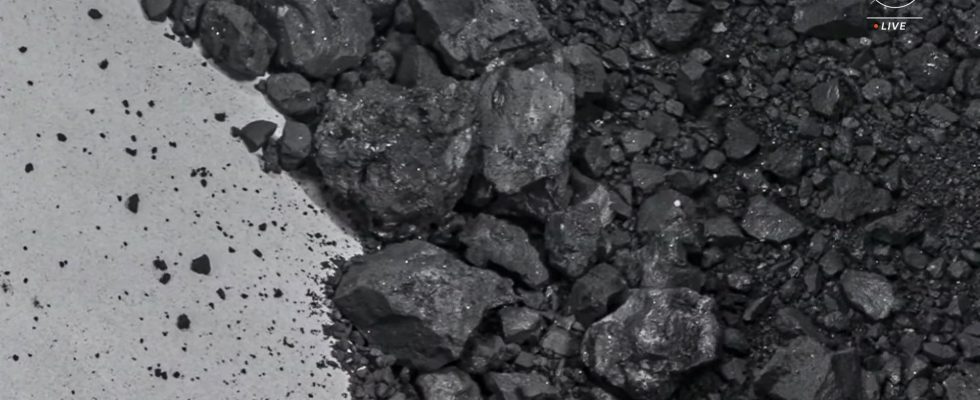Did asteroids allow the birth of life on Earth? This is what NASA scientists will try to determine using the sample from the asteroid Bennu taken by the Osiris-Rex probe in 2020. Reported by the American agency to Earth, it would contain water residues and carbon in large quantities. However, “these are crucial elements in the formation of our own planet,” recalled NASA boss Bill Nelson during an event organized in Houston, Texas.
According to initial statements from NASA, the water present on the asteroid would be trapped in what are called hydrated minerals, namely elements that contain water in their structure. “We think that’s how water got to Earth,” said Dante Lauretta, the mission’s principal scientist. And to date the landing of these hydrated minerals on Earth to “4 to 4.5 billion years ago”.
A surplus of material
This discovery is a great first for the US agency, which managed to collect some 250 grams of material from Bennu. A quantity much greater than the two previous Japanese missions sent to other asteroids. But for now, the sample, which arrived in NASA laboratories on September 24, has still not been analyzed in its entirety.
And for good reason, the abundance of the material collected was such that part of the sample leaked outside the capsule, thus allowing NASA to analyze the “surplus” before even opening it. . The entire sample should be apprehended within “two weeks”, specified Dante Lauretta, who assured that the material could be transmitted to scientists around the world “to study Bennu in their own laboratory”.
Avoiding a cataclysmic collision in 2182
But for now, a NASA team must establish within six months “a catalog of samples”, which should allow future generations to study them, with new instruments that are certainly more efficient. A similar process was notably initiated for lunar rocks brought back during the Apollo program in the 1970s.
Still, these samples of material from Bennu could ultimately prove very useful. Because although the risk is low – 1 chance in 2,700 – the asteroid could hit the Earth in 2182. A collision which would then prove cataclysmic.
